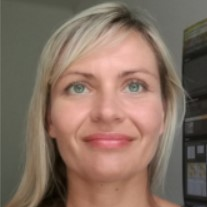Remote Sensing-based Mineral Exploration
A special issue of Minerals (ISSN 2075-163X). This special issue belongs to the section "Mineral Deposits".
Deadline for manuscript submissions: closed (16 July 2021) | Viewed by 11956
Special Issue Editors
Interests: hyperspectral; mineral exploration; spectroscopy
Interests: biogeochemistry for mineral exploration; compositional data analysis; mineral prospectivity modeling
Special Issues, Collections and Topics in MDPI journals
Interests: imaging spectroscopy; mineral spectroscopy; environmental monitoring; optical and thermal remote sensing; raw materials
Special Issues, Collections and Topics in MDPI journals
Special Issue Information
Dear Colleagues,
Multispectral and hyperspectral remote sensing data have been used for mineral identification and exploration for decades. This development has been driven, on one hand, by a need to discover new ore deposits, and, on the other hand, by technological developments, such as the miniaturization of instruments. In recent years, unmanned aerial vehicle (UAV)-based remote sensing has gained momentum as an intermediate-scale and flexible solution that offers both high spatial resolution and the ability to cover large and inaccessible areas. Albeit limited to areas with no extensive vegetation or sediment cover, optical spectroscopy offers a non-destructive and potentially cost-effective means of optimizing mineral exploration strategies and identifying new ore deposits.
This Special Issue will give an overview of the latest trends in remote sensing-based mineral exploration. Papers from all perspectives relevant to the topic are welcome, including those that report new advances in laboratory-based hyperspectral imaging. In particular, papers that explore the use of recent and emerging technologies, such as deep learning algorithms and UAVs, are welcome.
Dr. Kati Laakso
Dr. Maarit Middleton
Dr. Veronika Kopačková-Strnadová
Guest Editors
Manuscript Submission Information
Manuscripts should be submitted online at www.mdpi.com by registering and logging in to this website. Once you are registered, click here to go to the submission form. Manuscripts can be submitted until the deadline. All submissions that pass pre-check are peer-reviewed. Accepted papers will be published continuously in the journal (as soon as accepted) and will be listed together on the special issue website. Research articles, review articles as well as short communications are invited. For planned papers, a title and short abstract (about 100 words) can be sent to the Editorial Office for announcement on this website.
Submitted manuscripts should not have been published previously, nor be under consideration for publication elsewhere (except conference proceedings papers). All manuscripts are thoroughly refereed through a single-blind peer-review process. A guide for authors and other relevant information for submission of manuscripts is available on the Instructions for Authors page. Minerals is an international peer-reviewed open access monthly journal published by MDPI.
Please visit the Instructions for Authors page before submitting a manuscript. The Article Processing Charge (APC) for publication in this open access journal is 2400 CHF (Swiss Francs). Submitted papers should be well formatted and use good English. Authors may use MDPI's English editing service prior to publication or during author revisions.
Keywords
- mineral exploration
- hyperspectral
- multispectral
- optical spectroscopy







